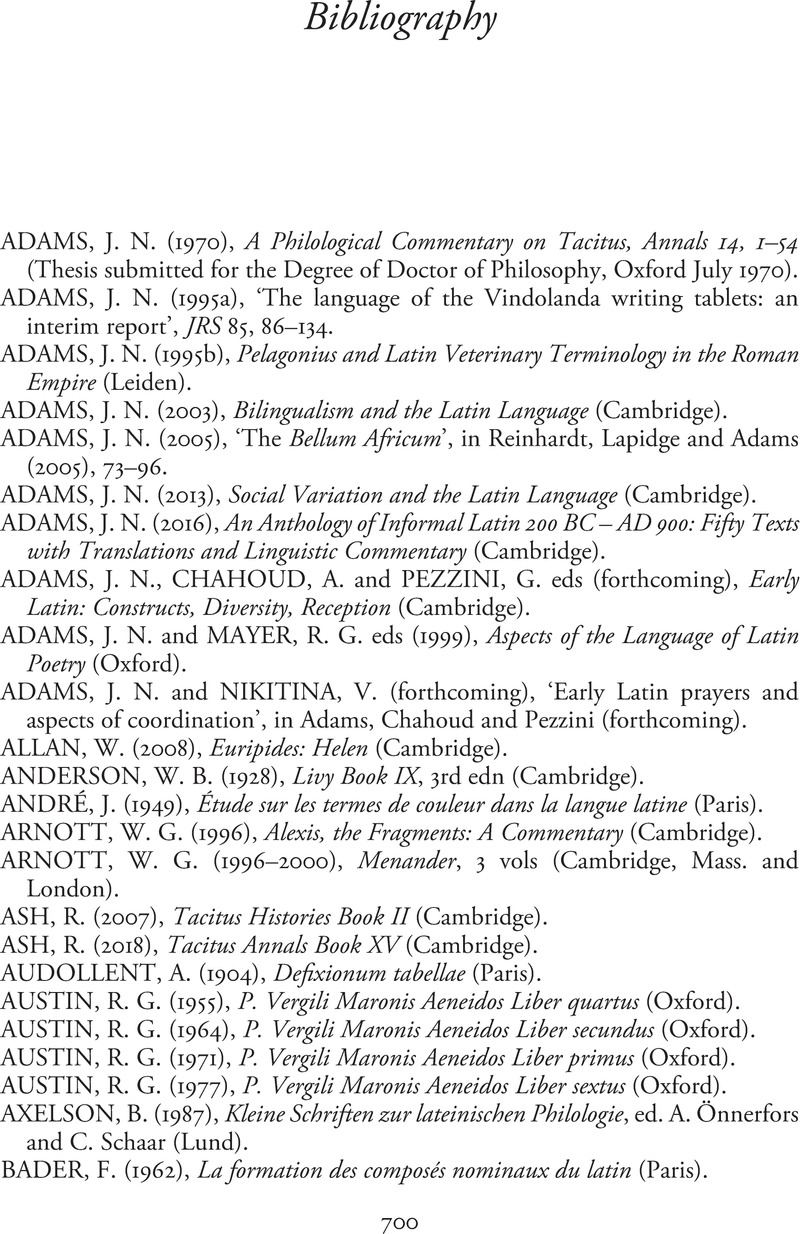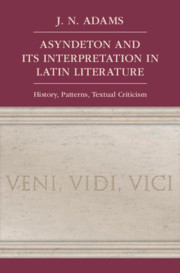Book contents
- Asyndeton and its Interpretation in Latin Literature
- Frontispiece
- Asyndeton and its Interpretation in Latin Literature
- Copyright page
- Contents
- Preface
- Acknowledgements
- Abbreviations
- Part 1 Introduction
- Part 2 ‘Grammatical’ Types
- Part 3 Semantic Types
- Part 4 Structures
- Part 5 Genres And Texts
- Part 6 Conclusions
- Bibliography
- Subject Index
- Index Mainly of Selected Pairs and Longer Sequences
- Selective Index Locorum
- References
Bibliography
Published online by Cambridge University Press: 13 May 2021
- Asyndeton and its Interpretation in Latin Literature
- Frontispiece
- Asyndeton and its Interpretation in Latin Literature
- Copyright page
- Contents
- Preface
- Acknowledgements
- Abbreviations
- Part 1 Introduction
- Part 2 ‘Grammatical’ Types
- Part 3 Semantic Types
- Part 4 Structures
- Part 5 Genres And Texts
- Part 6 Conclusions
- Bibliography
- Subject Index
- Index Mainly of Selected Pairs and Longer Sequences
- Selective Index Locorum
- References
Summary

- Type
- Chapter
- Information
- Asyndeton and its Interpretation in Latin LiteratureHistory, Patterns, Textual Criticism, pp. 700 - 714Publisher: Cambridge University PressPrint publication year: 2021



